“Look at this!”
I was having tea with a buddy, looking through some garden magazines. Much better than the internet — I think so, anyway.
“Oh my,” I replied. “That looks like a pinecone made of flowers.”
“Orchids, actually,” my friend proclaimed. “It’s called the pinecone-like orchid, or pinecone-like raceme dendrobium.” She looked at me as I studied the photo. “Wouldn’t that be a lovely addition to your orchid collection?”
She knew me well. I love my orchids, but she also knew (as did I) that there’s a limit to the varieties of orchids I can grow in my sunroom. Not to mention the fact that many of these orchids can only be found in wild or remote, far-away places.
“It’s a little big for my orchid garden,” I admitted with a sigh. “And probably not available locally.”
Description
Pinecone-like orchid, pinecone-like raceme dendrobium, or Dendrobium thyrsiflorum, is an orchid species of dendrobium. Its popular name is attributed to the clustered growth of beautiful flowers on this unique plant. The hanging display of orchid flowers is shaped like a pinecone. Even the plant’s hard stem, usually 12 to 24 inches (30 to 60 cm) in length with longitudinal grooves, has the appearance of a tree that bears pinecones.
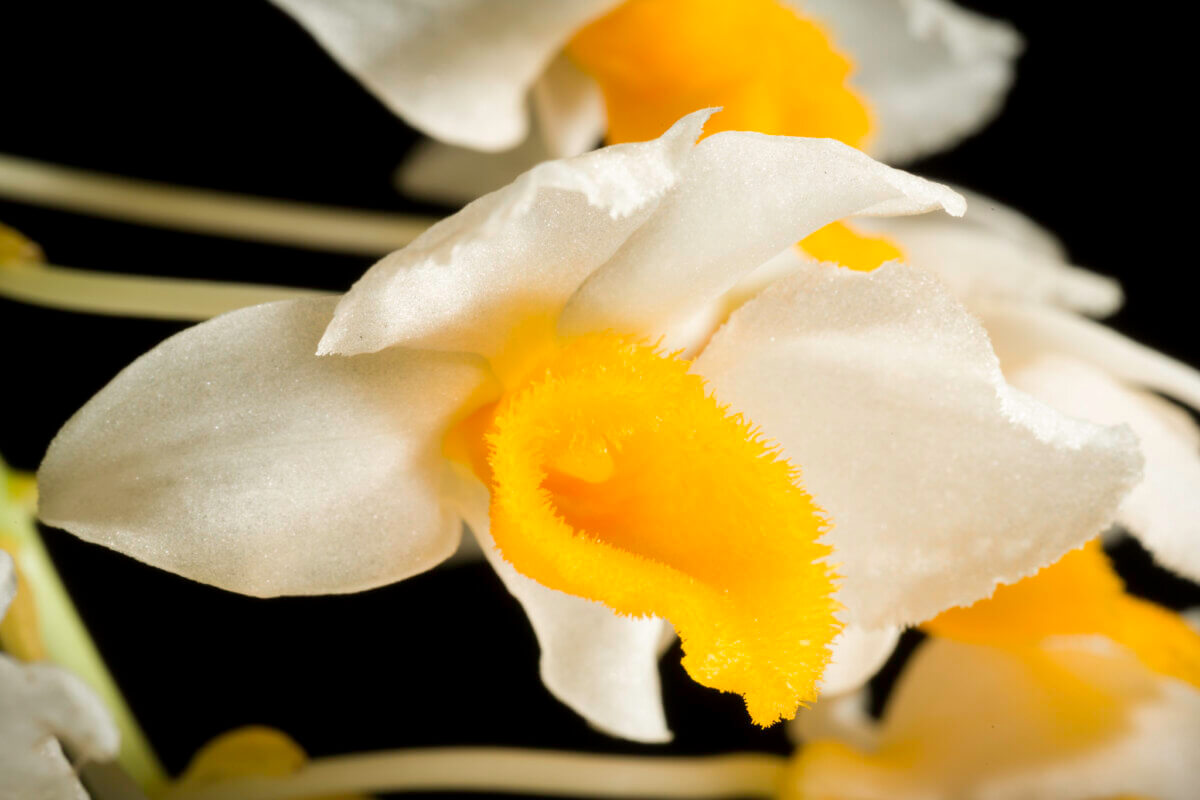
With 3 to 5 leaves per stem (thin, pointed, bluish in color and slightly glossy), the plant is considered deciduous, because it doesn’t have a rest season. As already mentioned, the flowers grow in a cluster about 7 to 12 inches in length, with many single flowers around the circumference. Each flower has white wings with a yellow throat. The blossom has a light aroma, but, sadly, unlike the rest of the plant, the flowers only last about 5 to 7 days, usually at the end of spring and early summer.
Symbolism
The pinecone itself is known as a symbol of enlightenment, as well as spiritual consciousness and everlasting, eternal life. Combine that symbolism with the meaning behind all orchid flowers – love, beauty, refinement, thoughtfulness, and charm — and you have a very symbolic, as well as uniquely beautiful flower. It’s not surprising that orchids, all varieties, are one of the most popular flowers.
Natural Habitat
Part of the Dendrobium genus, the pinecone-like orchid is native to the Himalayas (Bhutan, Assam, Yunnan, and Arunachal Pradesh), as well as the mountains of northern Indochina (Myanmar, Thailand, Laos, and Vietnam). It’s considered an evergreen plant, though it dies off slightly during a long dry season when there’s a shortage of water.
Growing Conditions
Since the pinecone-like raceme dendrobium tends to prefer growing on the branches and trunks of other plants (they are epiphytes, after all), it stands to reason that they prefer indirect light and slightly cool temperatures 14- to 24-degrees Celsius (58- to 75-degrees Fahrenheit). However, like all orchids, the pinecone-like orchid does require lots of sunlight — just not direct sunlight. This is important to remember whether growing this orchid inside or out.
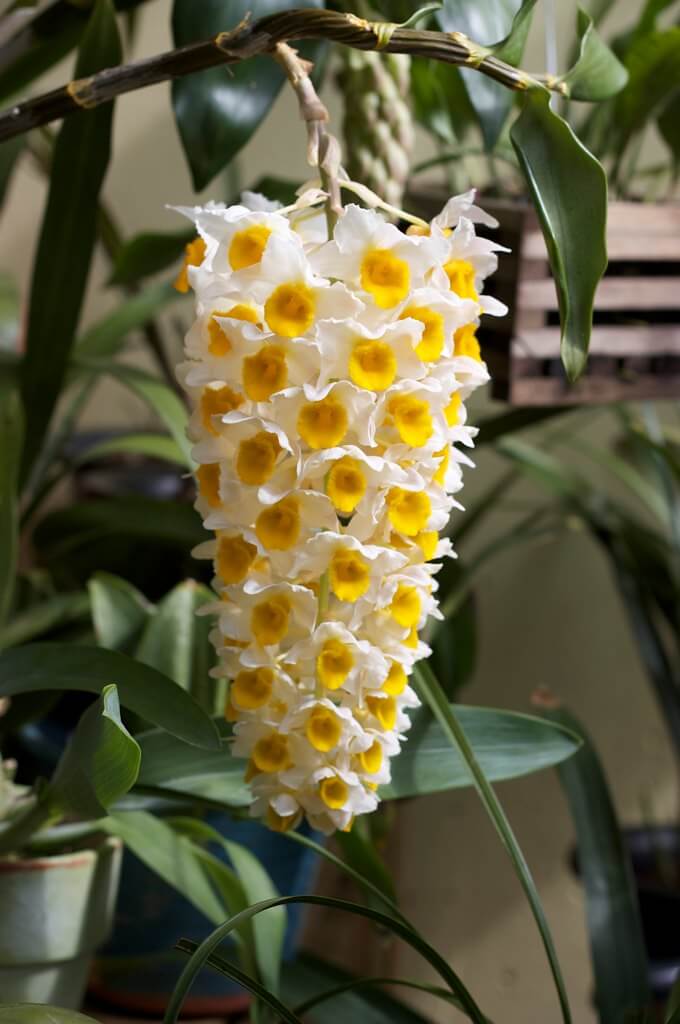
If growing indoors in pots, use a porous mix of sphagnum moss, fir bark, coconut husk and tree fern fibers (in other words, a bark mixture). This combination can be found in most prepared orchid-specific growing blends.
The mixture makes for an airy soil that allows the plant to become root-bound, which helps it thrive (so don’t repot when it appears root bound). Coolish temperatures should be maintained until the buds start appearing, then raise the temperature about 5 degrees to promote flower development.
Companion Plants
If you’re lucky enough to live in a climate that will support orchids outside (or you’re putting them in the same pot as other flowering plants), you may want to consider what plants make good companions. Usually variegated and colorful plants are the best choices: marble queen pothos, butterfly nephthytis, and purple waffle plant.
Remember that orchids don’t need or like a lot of water, but you can plant the orchid (pot and all) in the larger container full of companion plants and water accordingly.
Orchids of all varieties grow well with succulents and make for an interesting combo arrangement.
Pests and Diseases
Like all plants, the pinecone-like orchid has its unique and, sometimes, annoying pests and diseases. Orchids in general, don’t attract a lot of pests, but they are susceptible to mealy bugs and spider mites. These multiply exponentially and need to be treated as soon as they become visible, before they take over and destroy the plant.
The best way is to daub the infected parts of the plant (usually the leaves) with a cotton ball dipped in isopropyl or rubbing alcohol. It’s important to avoid using other alcohols like ethanol or methanol, as these will penetrate the plant tissues and kill the plant quicker than the pests will.
There are some diseases to watch for with pinecone-like orchids. The worst is the black rot, which affects many varieties of orchids and can be found on every part of the plant. At first, the black rot will appear on the leaves, looking like a yellow, almost transparent dot.
Another disease is the orchid virus, which has discolored brown and yellow ringspots. Flowers on a virus infected plant may show brown streaks or a break in the color patterns. The best treatment for either disease is to immediately remove the infected leaves or flowers before the infection becomes too severe.
Fungus (Cercospora) is another blight that affects the pinecone-like orchid (as well as many other varieties). Once again, it’s best to remove the infected leaves as soon as possible and dispose of them far from other plants; not in a compost, as this will encourage reigniting the fungus in other plants at a later date. There are fungicide sprays that can be used, but use sparingly.
Medicinal Uses
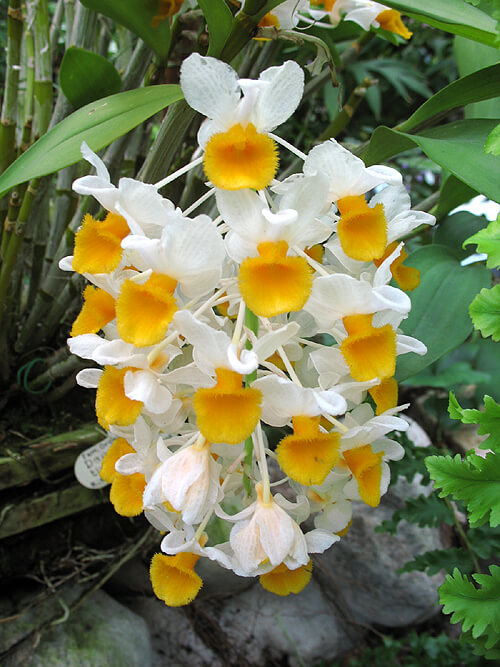
Pinecone-like orchids are considered to be nontoxic, and they can be used to treat chronic pharyngitis, thrombosis, arthritis, some skin infects like allergic dermatitis, dry mouth and sores in the mouth, stomach ailments, heatstroke, and a whole list of other diseases. In fact, in China this plant is believed to be one of the 50 fundamental herbs to treat all manner of ailments.
A great source of vitamin A and antioxidants, the pinecone-like orchid is beneficial to treat skin blemishes and generally rejuvenate the skin. It’s applied as an extract added to a face mist or face pack.
The best way to take pinecone-like orchid treatments is in teas, either homemade or powders purchased in health food stores. The parts of the plant to use are the stems (fresh or dried) and blossoms. Sometimes this tea is mixed with licorice root tea to increase one’s energy.
Note: An overdose of pinecone-like orchid may cause convulsions.
Like all varieties of orchids, the pinecone-like orchid is most popular as an ornamental addition to either indoor or outdoor garden settings. This orchid is considered rare, though it’s not one of the rarest orchids growing around the world. It’s also expensive to purchase, if you’re lucky enough to find a source from which to buy it.
Featured image courtesy of Motohiro Sunouchi on Flickr.


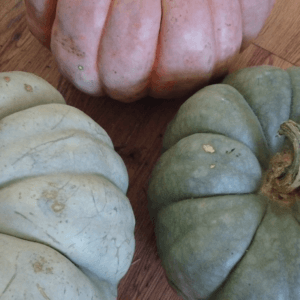

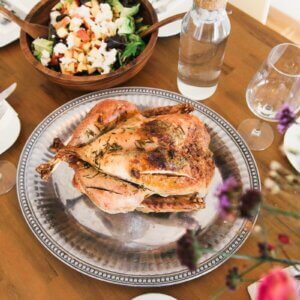
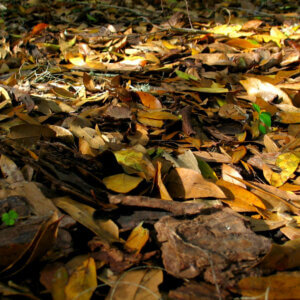
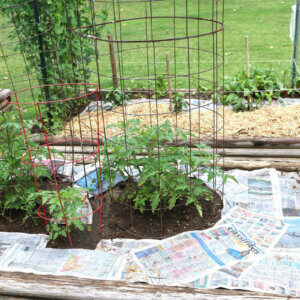

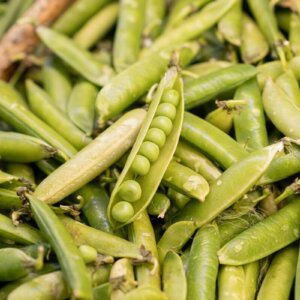
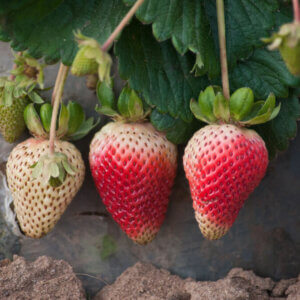


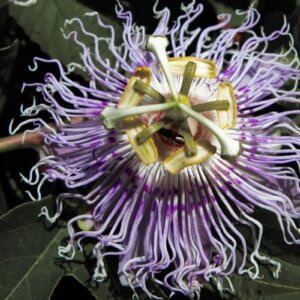
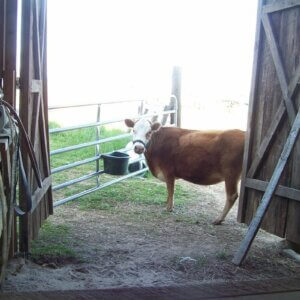

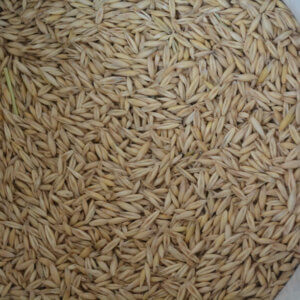
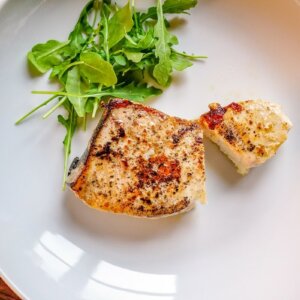
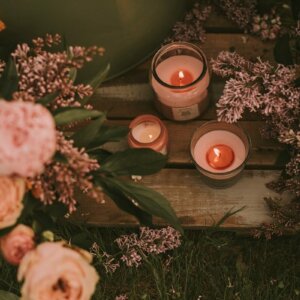

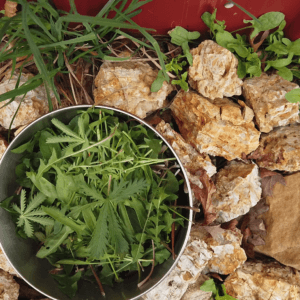
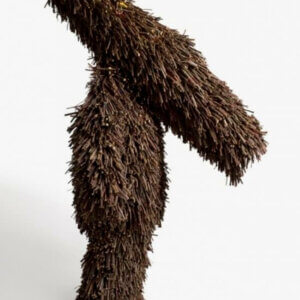

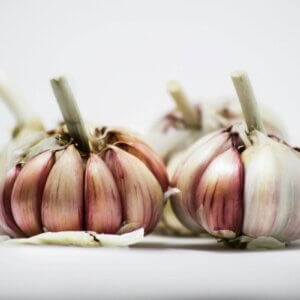
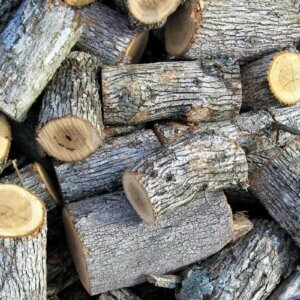

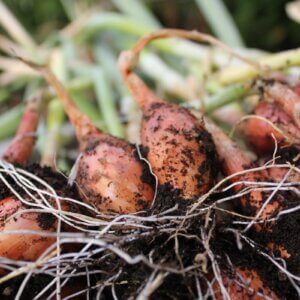


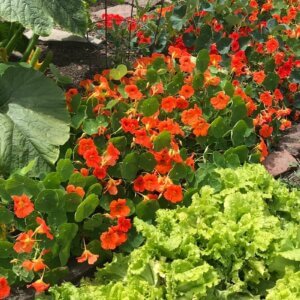



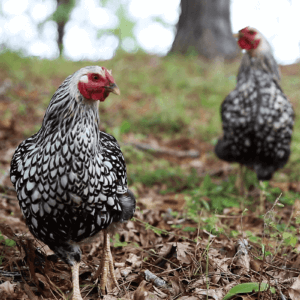
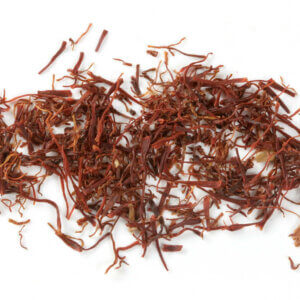

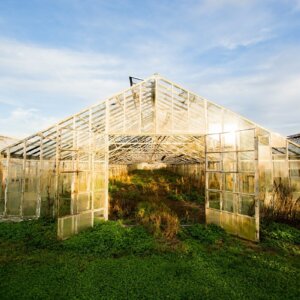
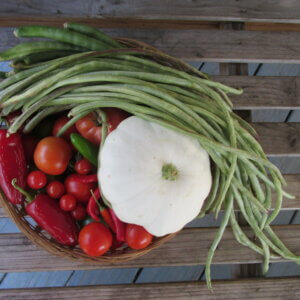
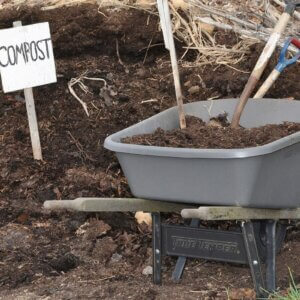
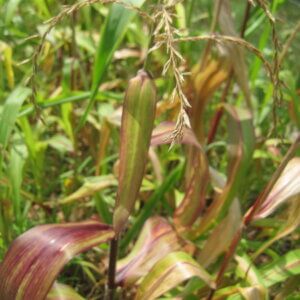
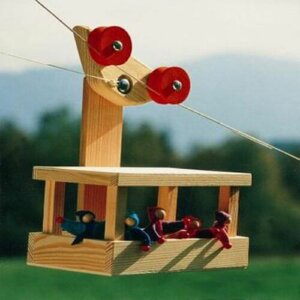
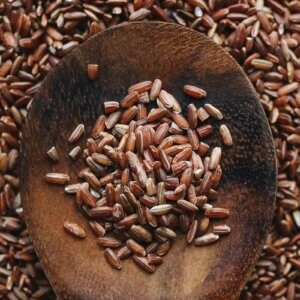
Leave a Reply